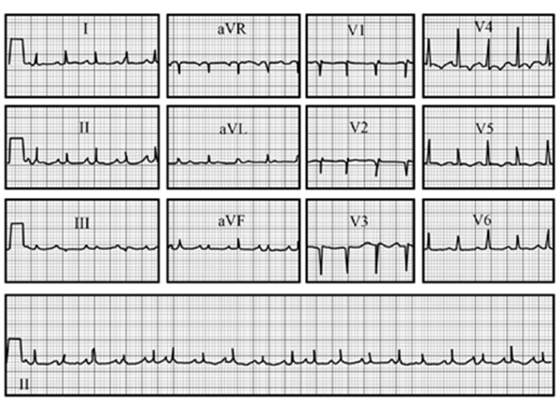Evolving acute pericarditis
This is an electrocardiogram from a patient with a large pericardial effusion.
Note the overall low voltage QRS limb leads less than or equal to 5 mm total amplitude in the limb leads, less than or equal to 10 mm in the QRS precordial leads and electrical alternans.
The alternating QRS voltage is best seen in leads II, III, aVF and V4 to V6.
Inverted T waves are present in lead V4. Electrical alternans is the result of a pendulum effect. As the heart contracts, it swings within the pericardial fluid resulting in a beat-to-beat change in the vector of depolarization. Electrical alternans can also occur in the setting of end-stage myocardial disease without a pericardial effusion, as seen with a severe dilated cardiomyopathy.
